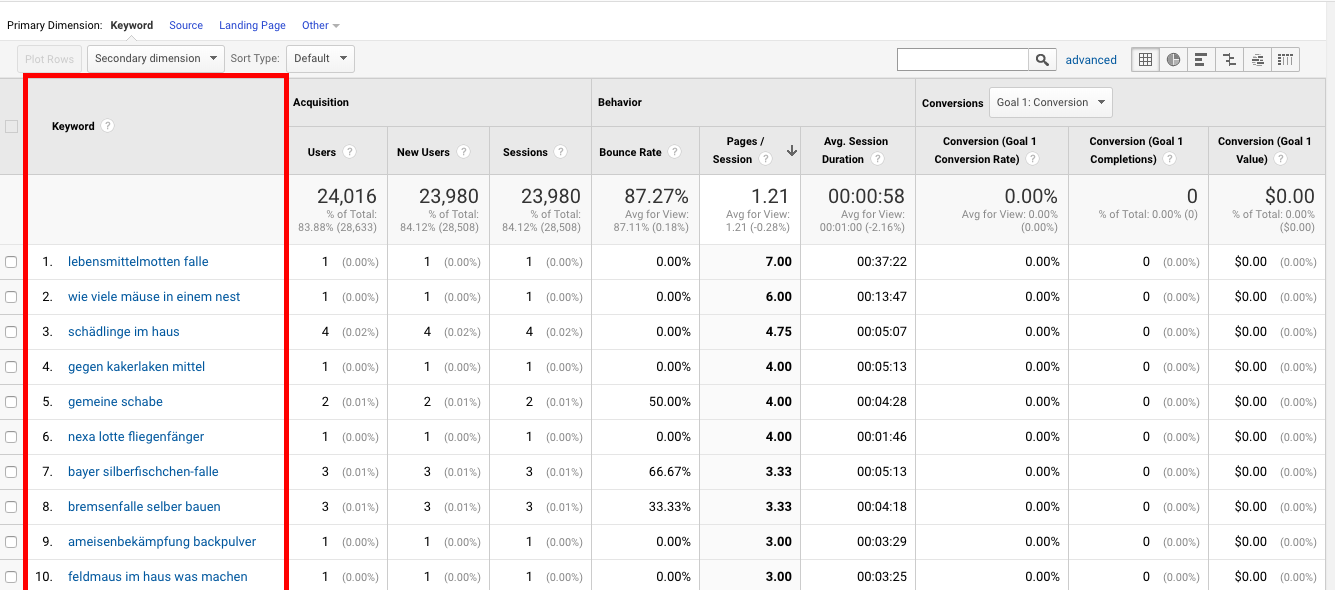The Ultimate Guide To What Is A Secondary Dimension In Google Analytics
Wiki Article
The 7-Minute Rule for What Is A Secondary Dimension In Google Analytics
Table of ContentsThings about What Is A Secondary Dimension In Google AnalyticsThe smart Trick of What Is A Secondary Dimension In Google Analytics That Nobody is DiscussingAn Unbiased View of What Is A Secondary Dimension In Google AnalyticsWhat Does What Is A Secondary Dimension In Google Analytics Mean?The Ultimate Guide To What Is A Secondary Dimension In Google Analytics5 Easy Facts About What Is A Secondary Dimension In Google Analytics Explained
The tool is indicated to help get you began and offer you with the details you might not understand off the top of your head. The remainder of the fields will certainly require to be entered by you.
It can be a sheet in the spreadsheet you're currently in, or a different spread sheet completely (as long as you have edit accessibility to that spread sheet). To publish the outcomes to a different spreadsheet copy the spread sheet link and paste it right into the cell to the right of the "spreadsheet-url" specification.
This opens up a report scheduling dialog where you can turn organizing on and also off, as well as set how frequently your record will certainly run. To turn organizing on, examine package identified "Enable reports to run automatically." Once organizing is allowed you can utilize the select dropdown to regulate the time and also regularity.
The Best Strategy To Use For What Is A Secondary Dimension In Google Analytics
When scheduling reports, make certain there is lots of time between when you produce the schedule as well as when the timetable is intended to run. If it's too close to the very first incident of the scheduled time, there's an opportunity those reports will be delayed up until the following event. It will likewise be the name of the sheet where the record information is created.
The complying with expression returns the last day of the previous month: =EOMONTH(TODAY(), -1) The end date for bring Analytics data. Demands can define an end date formatted as YYYY-MM-DD, or as a relative day (e. g., today, yesterday, or Ndays, Ago where N is a favorable integer). You can also make use of Sheets date functions to define this value programmatically.
9 Easy Facts About What Is A Secondary Dimension In Google Analytics Described
Metrics can be defined in one of 2 formats: For example, all of the complying with are valid values for the Metrics specification. For most use instances, a list of statistics IDs is the easiest method to specify the Metrics criterion - What Is A Secondary Dimension In Google Analytics.Call Description A checklist of dimensions to quiz. Dimensions can be defined in one of 2 layouts: For example, all of the complying with are valid values for the Metrics parameter. For most make use of instances, a listing of dimension IDs is the easiest means to define the Dimensions parameter.
The arranging order of the outcomes by column (metric or dimension ID) and instructions (ascending or coming down). Order can be specified in one of 2 styles: For instance, all of the adhering to are valid worths for the Order criterion. For a lot of use situations, the legacy style is the easiest method to specify the Order specification.
The Greatest Guide To What Is A Secondary Dimension In Google Analytics
g. usage contrast drivers on measurements) after that you have to define the value as JSON. Conditions that let you restrict the set of sessions or users your query applies to. Segments can be specified in a couple of formats: As an example, any of the complying with stand values for the segments specification.
If you require to do sophisticated division (e. g. use comparison drivers on measurements) then you must define the worth as JSON. The maximum number of outcomes that will certainly be returned for a report.
When TRUE the record in the equivalent column will certainly not be run. This option is beneficial if experimenting with a brand-new report and also you don't want to run all your records till you're completed.
Some Of What Is A Secondary Dimension In Google Analytics
Many may remember the Category-Action-Label power structure in Universal Analytics. It's vital to note Recommended Reading that while this structure given flexibility, it also needed uniformity. Without it, data could rapidly end up being jumbled, especially when multiple individuals were executing occasions with differing analyses. my blog Cookie-Based Monitoring: GA3 largely relied on cookies to track individual interactions, which can be restricted by browser settings as well as personal privacy problems.GA4's enhanced real-time reporting provides actionable understandings, such as the Occasion count by event name card, allowing customers to see occasion failures as they occur as well as access associated parameters with a click. This feature sustains active decision-making for services. Clicking a specification reveals the particular values that have actually been gathered.
GA4 operates on an entirely events-based version, categorising occasions into four distinctive types: These are occasions that GA4 records right out of the box as quickly as the monitoring code is set up (What Is A Secondary Dimension In Google Analytics). Examples consist of first check outs, page sights, this post and also display views. Immediately collected events in GA4 are set off by fundamental interactions with a website or mobile application
The Basic Principles Of What Is A Secondary Dimension In Google Analytics
Shopping sites should utilize the details e-commerce syntax given by GA4 to access specialised records. These occasions are handy due to the fact that they provide companies with pre-configured occasion monitoring alternatives, allowing them to rapidly as well as conveniently track essential interactions and also practices on their website or app without the need for manual configuration, saving time as well as effort.Report this wiki page